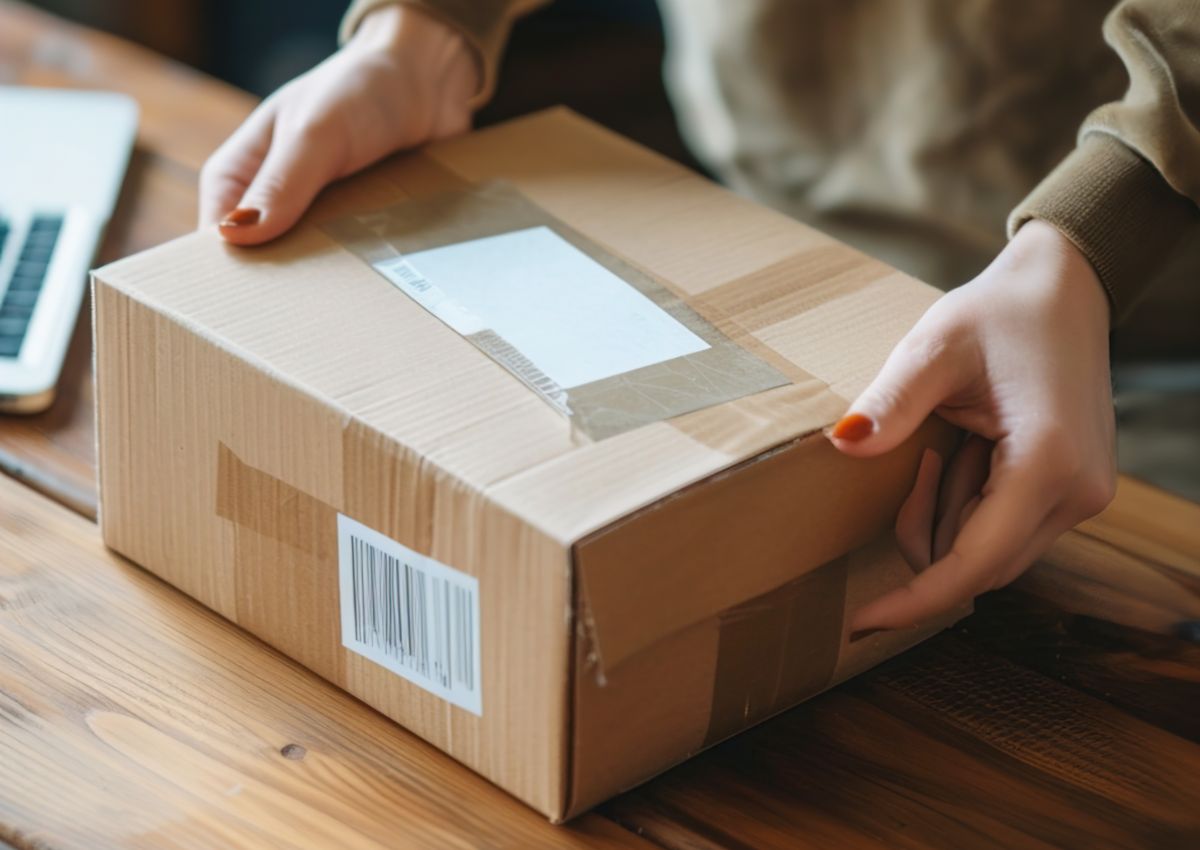Ahead of the eighth annual Internet Retailing Conference (IRC 2013) we’re running a series of previews of the event, focusing on the highlights of the one-day conference and featuring interviews with speakers. Today we speak to Sean McKee, head of ecommerce and customer services at Schuh who will be taking part in a panel discussion on internet retailing in store.
Internet Retailing: Can you tell us briefly about the Schuh experience of taking internet retailing into the store?
Sean McKee, head of ecommerce and customer services at Schuh: Our experience of taking internet into the store has been simplistic and logistically oriented. Our business is extremely product-centred so we want to shift the inventory in as efficient a way as possible. Where that intersects with customer demand it creates opportunities for us. Internet retailing in store is two things – it’s a place where fulfillment physically takes place for the customer. We now have three separate click and collect services.
The store is also a place where we sell product that isn’t physically in stock that day. About five per cent of our store sales are generated every day from product that is somewhere in the business but not in that store at that moment. We sell it to the customer usually from a kiosk screen, where we can show the customer some real time information and give them confidence about the process.
There’s fulfillment from a customer perspective and fulfillment behind the scenes where we are in our stores picking product four times a day in order to fill internet and customer orders. About 25% of the orders we fulfil for our online business are fulfilled in our stores.
In the last couple of months we’ve launched one hour buy and collect – customers can buy from local inventory and it’s ready within the hour. We’re fairly mature when it comes to being able to use our systems/processes to get product to the store environment.
We have a single view of inventory for the whole business, all channels in real time. We’ve been real time for about two years. We were pretty close before but it really has made a difference to us. We’re selling right down to the last SKU (stock-keeping unit) in those stores, right down to the last pair.
For us it’s not exclusively a systems process – human intervention still very important, and every single selection a customer makes is physically checked in the store by a human being. It really is a good mix of people and systems.
For us that’s probably the best part of it, of internet retailing in our stores. We’re not a retailer who’ll tell you some very sexy story about augmented reality, or big screens that are interactive. It’s really much more about the simplicity of customer demand and how we best get inventory to customers in a way that’s as quick and convenient as possible. It’s not super sexy but it’s efficient. It works.
For our UK and Irish customers now, about 13% of all the product selections made on our website are being picked up or delivered to the store. Store pick up is increasingly important. And that’s gone up a couple of percentage points in the last couple of years – it is increasing in terms of the level of demand from customers.
And of course mobile plays a part in that. We do see different participation of that kind of activity on the mobile site relative to the desktop site. It does stand to reason that the more likely a customer is to be on the go, the more likely local store inventory is of interest to them. It’s certainly pertinent towards where the market is headed in terms of device participation – we think we’re relevant.
IR: Can you tell us about something you/Schuh found difficult in that move and how you solved that?
SM: It’s this question of what technology is appropriate in the store environment. What do you put in front of digital natives in the bricks and mortar environment? We have a long chequered history of trying to put kiosks in the store. In the last couple of years we’ve put a couple of very big screens into two stores, screwed into the wall in a fixed location, that basically look and feel like giant smartphones, behave like a mobile site or app and are very user friendly.
It reinforces our view that we just cannot get customers to interact with technology in store. When we get a member of staff to walk them through it, it tends work much better. But the unexpected lesson has been that when we impose technology on customers in bricks and mortar, they just do not interact with it. The realpolitik of this situation is that the customer wants better technology than we can supply. We can’t be more convenient that the technology that’s in their hand and our focus really has to be to enable customers.
We did a major piece of research earlier this year and we asked customers what we could do to enhance their experience – one message came through. Let me check stock levels for myself in real time. I like your friendly staff and interacting with them but I also get uncomfortable if I have to keep them going to the stock room. Let me do my own checking before I interact with them.
That’s something we’re focused on – we haven’t worked out how to deliver it yet but we will deliver it on the customer’s own technology.
IR: Has there been an unexpected upside to taking digital into stores?
SM: I think the unexpected upside is that we really don’t need to spend thousands of pounds on capital expenditure on digital technology that customers bought the technology for us – we just need to enable the technology. Retailers with the best will in the world, you can kit out a central London store in one way but when you roll out a typical store outside a major conurbation the ability to spend a lot of capital to get things right in the store is compromised. It wasn’t an intended consequence but a positive consequence.
IR: Do you offer free wifi?
SM: We’ve been experimenting with it for most of this year and we have almost got the UK completely rolled out, and are rolling out Ireland as well. We’re trying it as a means to do two things. We want to help a mobilized customer have an easier experience, the most convenient experience we can, and we also hope to pick up some data about customer behaviour through the use of free wifi.
But in all honesty the jury is completely out on the whole question of provision. I think if we had a few hundred thousand square foot department store estate to think about that might be a consideration. It may be that it is or isn’t entirely pertinent but we don’t know the answer. We’re trying it, seeing what we learn about customer behaviour and what data we can acquire but we simply don’t know at this stage.
IR: In your opinion, is showrooming something to be welcomed or resisted – and how?
SM: Showrooming has to be filed under the ‘shit happens’ chapter of 21st century retailing. It is just shopping. It’s what customers used to do with catalogues, it’s what they used to do by walking up and down the high street. It’s just not very convenient for retailers to watch people do it in their store. But the reality is they’ve always done it.
Our position is that you can’t force the customer’s hand – they have to do what they want to do. And given that they are telling us what they’d like to do in our store estate, we’d like to present them with that alternative of inventory checking. We’re going to give them something to do in our estate that makes sense to us – beyond that it’s really a question of customer choice. It’s quite common now to walk around stores and see customers photographing product as well, which retailers would have had a heart attack about five years ago if that was happening. I think in the end the customer’s in charge of the conversation, they’re going to do it, they are technologically enabled, and there’s literally no point getting wound up about showrooming.
Our business is very much a full price proposition – there will be businesses who think in terms of opportunities for push messaging, messages in competitive locations, for getting to the customer to make sure you win that conversation really in an aggressive way. But that isn’t for us – we’ll facilitate customer choice, we won’t compromise our full price position and we will try to give the customer a logical alternative in our estate. That’s really our position.
IR: How do you think the retail industry will be different in five years time – and how will customers have evolved the way that they shop?
SM: I think it’s fair to say the last five years has seen a paradigm shift in retailing, first with the launch of iPhones and then tablets – we didn’t even know we needed tablets.
I think there are a few things we can take for granted. I think the average number of stores required for geographic coverage will be smaller. That’s a given. I think that we’ll see much more prevalence of technology in the store environment that do today and much more obvious use of technology from a customer perspective in store than today.
We’ll be seeing customers doing a lot more self-service in locations as well. Who’d have known we’d be our own cashiers in supermarkets? I think supermarkets are very good at eduating customers – really click and collect only started to develop traction when Tesco started speaking that language. If you go somewhere three or four times a week you really can be educated.
I think high-speed convenience, with absolute certainty about product availability, will all become very normal for people in a much smaller retail landscape that covers bigger geographies from smaller physical locations.
I’m not sure we’ll ever get to the point where we have tiny boutique kiosks where we just show something on a screen. We want to see, touch and smell the theatre of retail. The reality will be we touch, feel see, experience, but expect the logistics efficiency of a warehouse operation for that theatre. It’s not enough to have one or the other – how do you get the optimum of both?
I think the sad reality is there’s going to continue to be a shaking out of a number of retailers, people who are able to keep up with disruptive level of customer demand will win and the people who can’t will wither, unfortunately that is the case.
The power of people like Amazon is very important – they told everyone what was one click checkout, what very efficient logistics looked like and what a very big range at the best price looked like. It wouldn’t surprise me to sse some of those big efficient etailers recognising that bricks and mortar has a very important role to play – getting close to the customer is a major competitive advantage, particularly as customer requires more. Next day isn’t a hygiene factor at the moment but we will need to be able to deliver next day and for a greater number of customers.
Five years down the road we’ll remember when people got things next day – it’ll be a same day environment where we’ll just expect it. You’ll have to be fast, efficient and do that with bricks and mortar in a confined space. Pureplayers are coming into bricks and mortar as well – we’re already seeing eBay with pop up shops and Amazon delivering to lockers and collect plus. They are realising that bricks and mortar resonates with customers. It really is more convenient.
Sean McKee, head of ecommerce and customer services at Schuh, will be among the panelists on the Internet Retailing In Store panel discussion at Internet Retailing Conference 2013 www.internetretailingconference.co.uk. The discussion, in The Customer conference stream takes place at 2.35pm.








